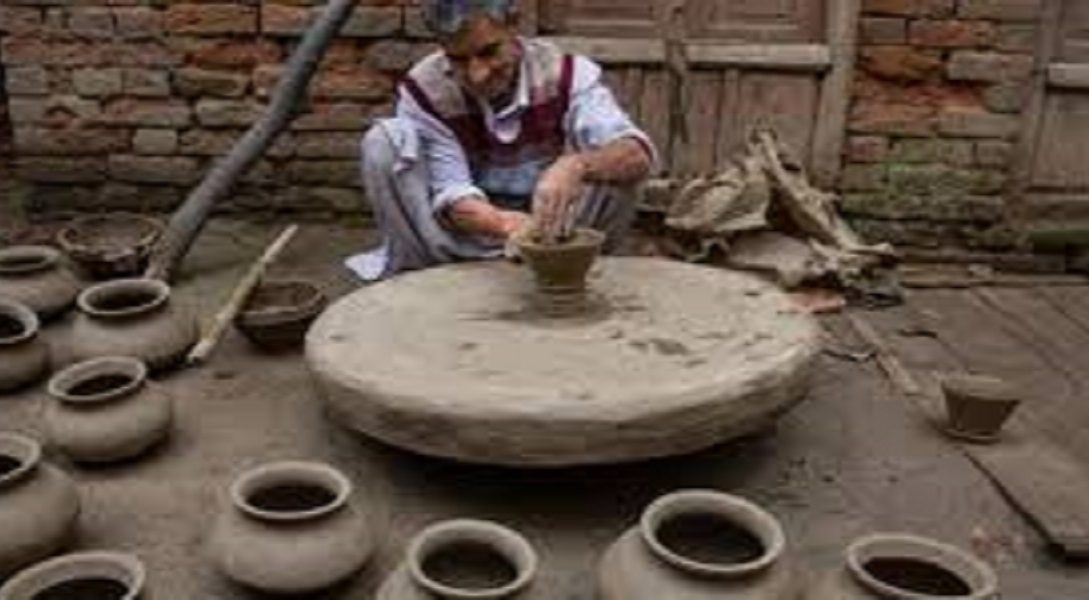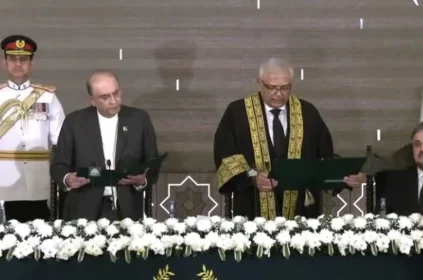Ibne Hassan Shawl
The Wheel once a hope for many running the traditional Kashmiri earthenware pottery and showing the craftsmanship of Kral (the clay potter) was once important part of every Kashmiri household and a large number of foreign tourists buying Kashmiri clay pottry.
Kashmiri clay pottery, was once an industry and important part of every Kashmiri households, has gone into an era of ignorance or negligence.
Clay pottery which was once being considered an art and need of every Kashmiri household is now fighting for its survival and people potters (Kral) attached with this once famous industry (the potters) are leading a life of worst form.
Across Kashmiri, potters (Kral) are living a hopeless life saying the demand for earthenware has collapsed by almost 99 per cent in the last two decades, forcing many to produce only small decorative pieces or abandon the industry altogether.
People from generations were working with earthenware (clay) known as Kral famous producing good artistic peices either pottery of regular household use or decorative items.
Abdul Rashid Kumar, was once very active producer of earthernware pottery by working with clay — on a wheel of hope — for many decades and generations. His father and grandfather were (Kral) potters, and he learned the art from his father.
“We used to make Thal Baane (round bowls shaped pot used by men to eat rice), Kanz (round wase shaped pot used by women to eat rice), flowerpots, and Kang (traditional Kashmiri pots). Nout (water pots) for storing water and women were carrying water from spring and streams. Every household used to buy this pottery,” he revealed his story with terrible disappointment.
“Now, these items are no longer sell. Instead, we make (Doul) yoghurt bowls, oil lamps (Tsong), tumbaknaer (a traditional Kashmiri musical instrument), and clay cups. People buy these items only for decoration or festivals, not for everyday use”, he said and added that now potters (Kral) are moving to find some other businesses for livelihood).
He was of the view that the decline began gradually but has now reached a critical point rather climax. “Out of 100 people, maybe one still buys earthenware utensils. Ninety-nine have switched to plastic, steel, or aluminum. We have no choice but to reduce what we produce.”
The decline is not confined to one village. A grandson of a well-known potter family from Wanpora in Pulwama recalled how his family’s wheel fell silent.
“Plastic, steel and aluminium replaced clay. People stopped paying. We used to get rice and Atta instead of money just for survival, one teen (Constrain) for a batch of pots,” he said. “Women from our family used to go door to door to sell them. Slowly, buyers disappeared, and poverty forced my grandfather to make a choice.”
That choice was to give up pottery and open a bakery. “It hurts because it felt like erasing part of our history,” he said. “But when I saw my sons doing well in the bakery, I found peace. Still, I miss the wheel.”
For his family, pottery had been more than a trade. It was a way of life. “I remember waking up for school and seeing Dadaji (Grandfather) already at the wheel, wearing a kurta, hands muddy, eyes focused. The earthy smell and the sound of spinning clay were part of our home,” he said.
“When I was nine or ten, Abba, my rather asked me to try. My hands were shaking, the clay was cold and alive. I made a crooked little bowl. That was the moment I felt connected to something bigger.”
Krals (Potters) across Kashmir share similar memories. For generations they shaped earth into everyday essentials like Nout water pots for summer, degchis for wedding feasts, tumbaknari for singers, Tsong (diyas) for festivals.
Pottery was a work of patience and skill, passed down like inheritance. But now the times has changed. Cheaper materials, faster lifestyles, and the absence of steady income have pushed the Kral (the craftsmen) to the margins. Many families have turned to other professions.
Despite the decline, traces of demand remain in decorative clay waterfalls, miniature shikara, and tableware for hotels find a market in Srinagar and tourist centres. For some artisans, these products have become a lifeline.
Writer is working journalist and article and feature writer and can be resched on ibnehassan@gmail.com
Read more:https://nayakashmir.com/ifshana-feroz-first-floral-chocolate-maker-of-kashmir-an-ideal-for-youth/
















